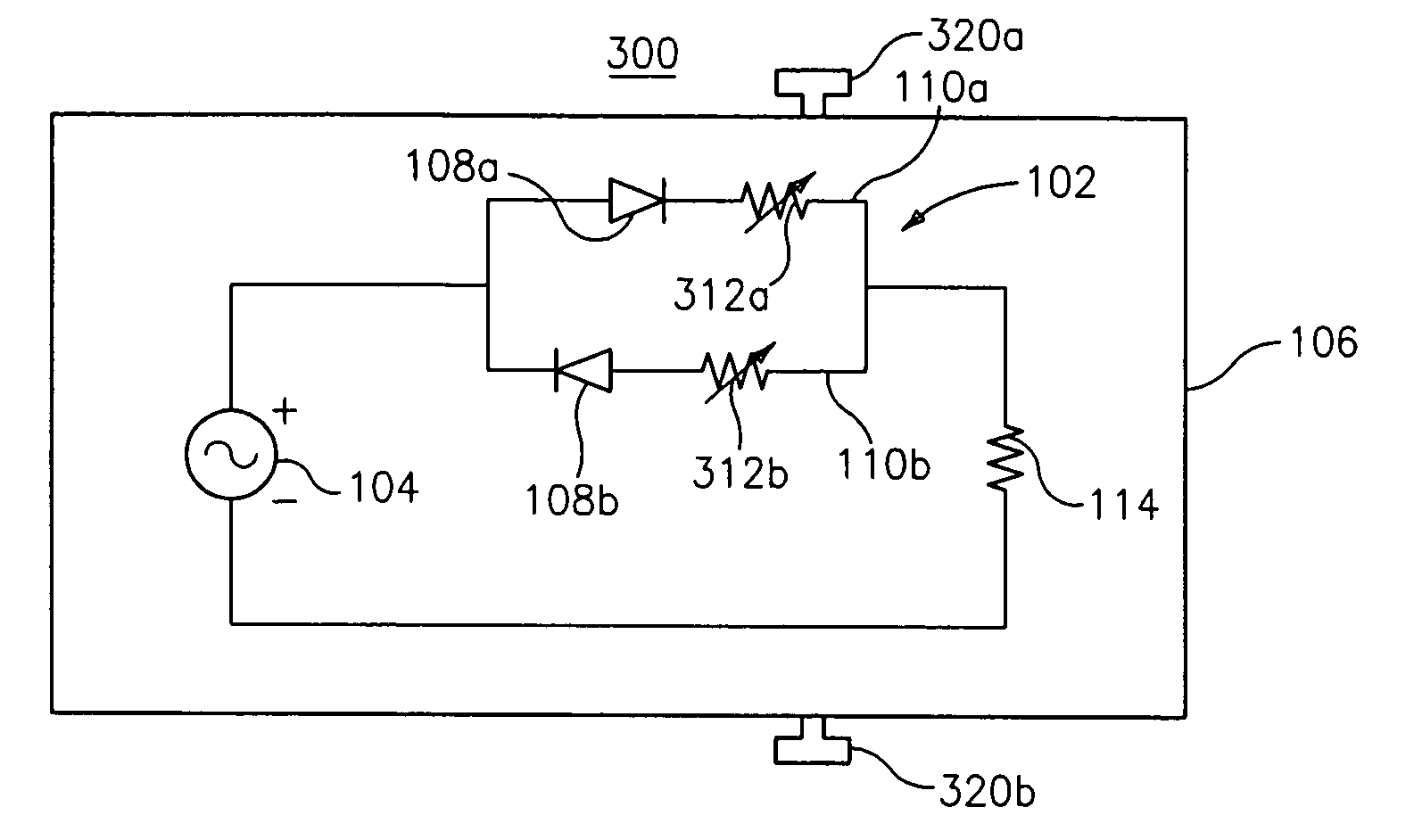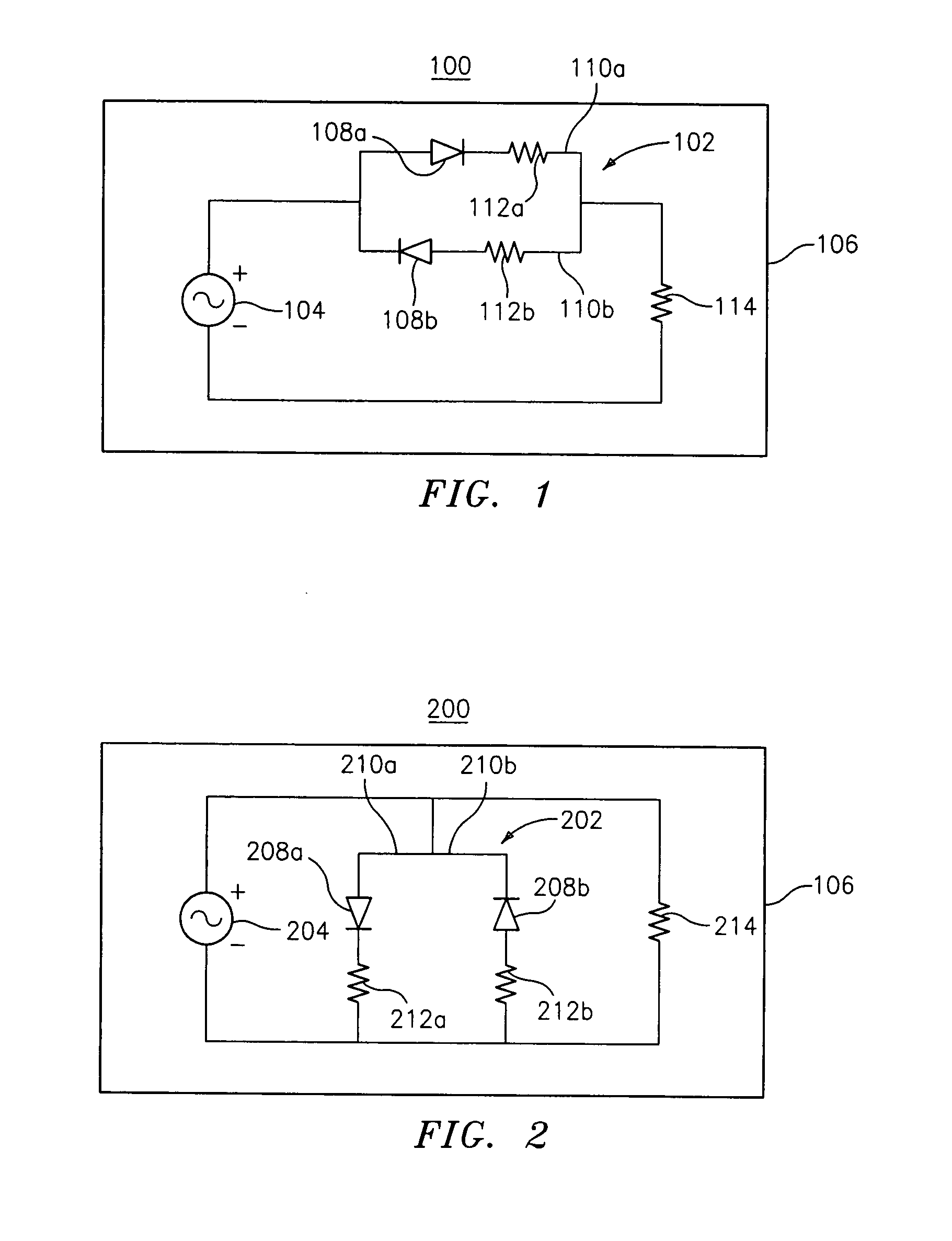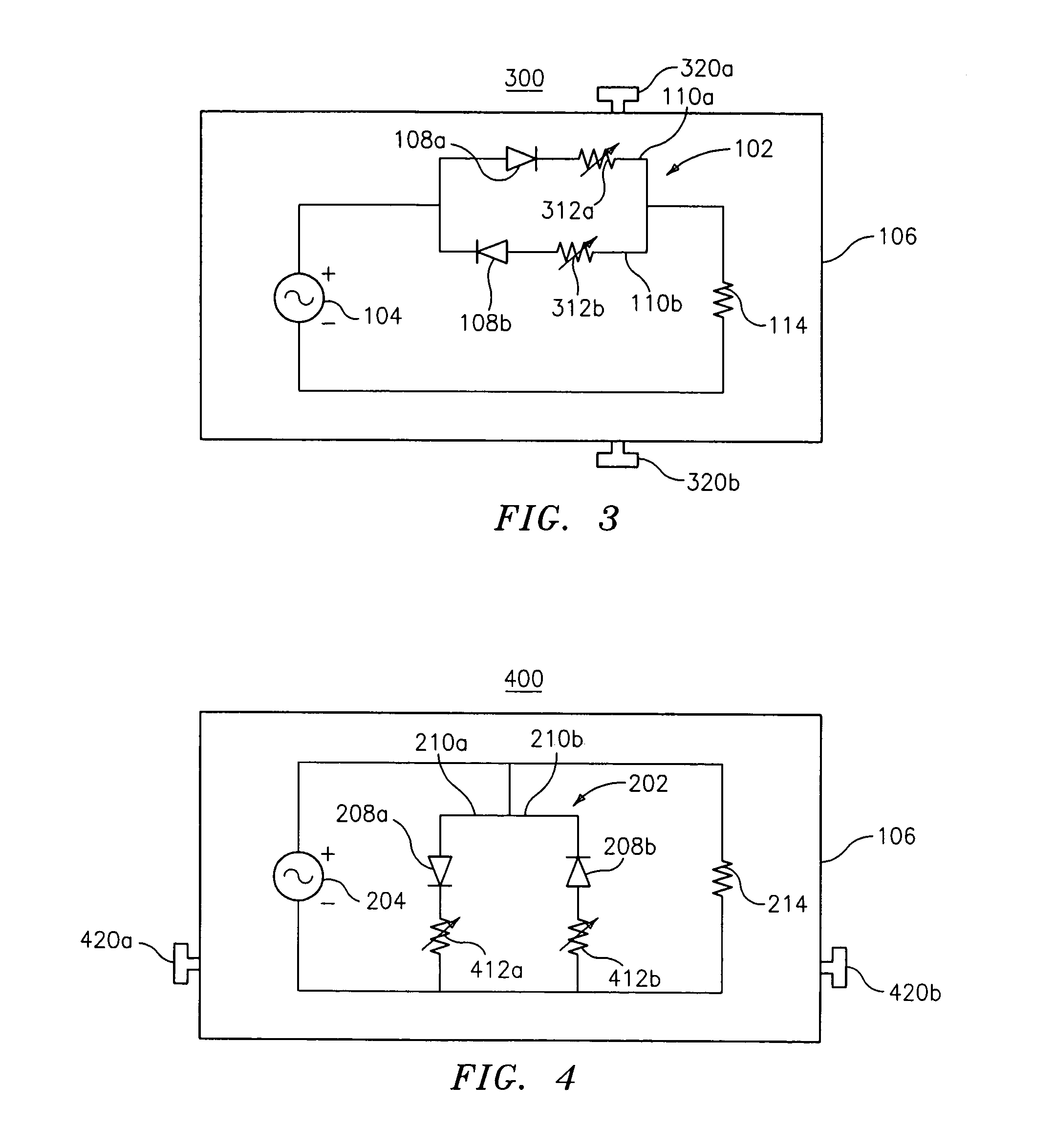Circuit for controlling arc energy from an electrosurgical generator
a generator and circuit technology, applied in the field of electrosurgical surgery, can solve the problems of difficult prediction and control of the depth of ablation, undesirable collateral damage to critical tissue and/or organs, and the inability of electrosurgical generators to vary the amount of energy, etc., to minimize the amount of tissue vaporization, limit thermal spread, and minimize current
- Summary
- Abstract
- Description
- Claims
- Application Information
AI Technical Summary
Benefits of technology
Problems solved by technology
Method used
Image
Examples
Embodiment Construction
[0019]Reference is made to the drawings where like reference numerals refer to similar elements. Referring to FIG. 1, there is shown a schematic diagram of a circuit according to one embodiment of the present disclosure generally identified by reference numeral 100. Circuit 100 includes a diode-resistor block 102 in series with an output current 104 of an electrosurgical generator 106. The diode-resistor block 102 includes a pair of diodes 108a, 108b biased opposite from each other, thus splitting the output current 104 into two paths 110a, 110b. Preferably, the diodes 108a and 108b are high voltage, fast recovering diodes.
[0020]The diode-resistor block 102 further includes resistors 112a, 112b in each of these two paths 110a, 110b. These resistors 112a, 112b, depending on their resistive value (including having no resistive value, i.e., short), limit the current for each half cycle of the output current 104. Preferably, the resistance value for resistors 112a and 112b is in the ran...
PUM
 Login to View More
Login to View More Abstract
Description
Claims
Application Information
 Login to View More
Login to View More - R&D
- Intellectual Property
- Life Sciences
- Materials
- Tech Scout
- Unparalleled Data Quality
- Higher Quality Content
- 60% Fewer Hallucinations
Browse by: Latest US Patents, China's latest patents, Technical Efficacy Thesaurus, Application Domain, Technology Topic, Popular Technical Reports.
© 2025 PatSnap. All rights reserved.Legal|Privacy policy|Modern Slavery Act Transparency Statement|Sitemap|About US| Contact US: help@patsnap.com



